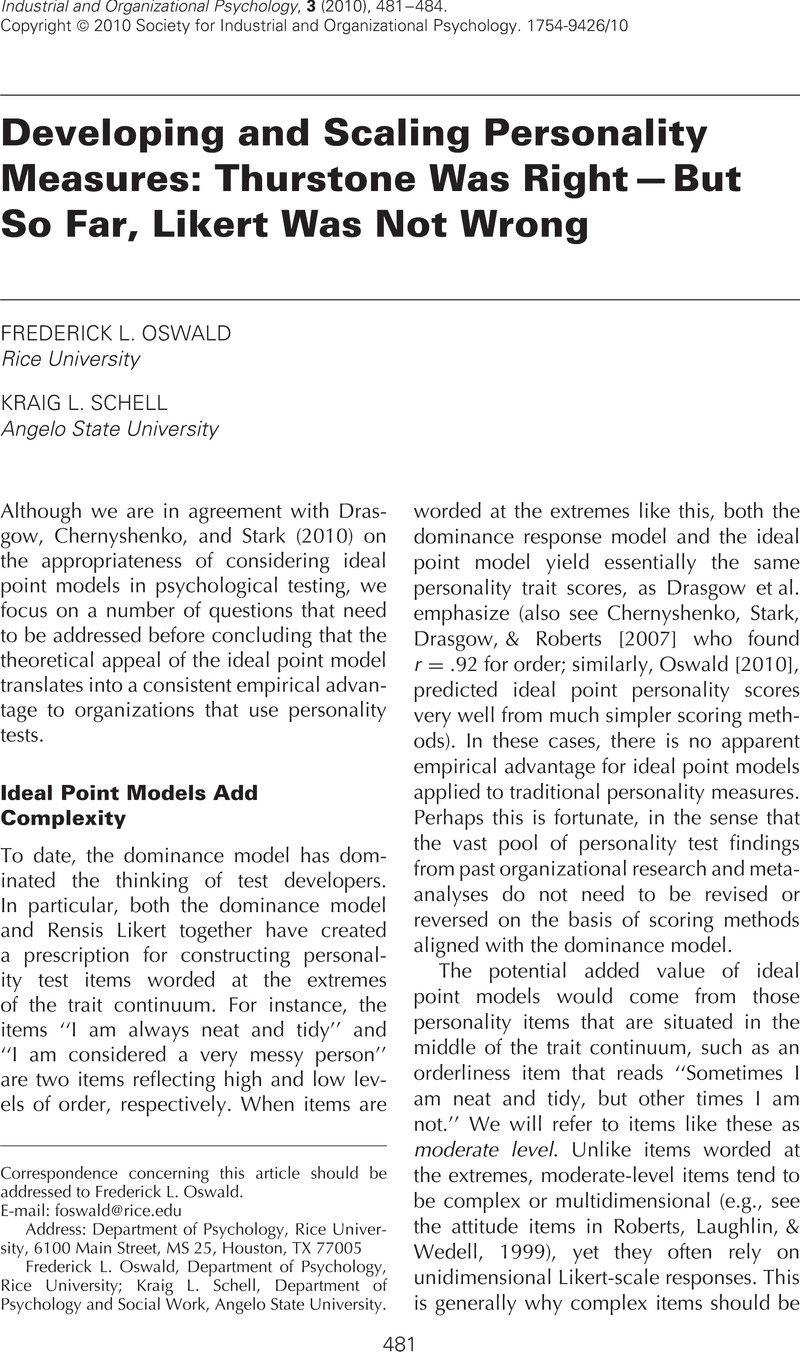Crossref Citations
This article has been cited by the following publications. This list is generated based on data provided by Crossref.
Drasgow, Fritz
Chernyshenko, Oleksandr S.
and
Stark, Stephen
2010.
Improving the Measurement of Psychological Variables: Ideal Point Models Rock!.
Industrial and Organizational Psychology,
Vol. 3,
Issue. 4,
p.
515.
Tay, Louis
and
Drasgow, Fritz
2012.
Theoretical, Statistical, and Substantive Issues in the Assessment of Construct Dimensionality.
Organizational Research Methods,
Vol. 15,
Issue. 3,
p.
363.
Park, DongGun
Choi, MyungOk
Lee, WonSun
Lee, HyeMin
and
Lee, JunHee
2012.
Comparison between dominance process model and ideal point response model for personality assesment.
Korean Journal of Industrial and Organizational Psychology,
Vol. 25,
Issue. 2,
p.
421.
Dalal, Dev K.
Carter, Nathan T.
and
Lake, Christopher J.
2014.
Middle Response Scale Options are Inappropriate for Ideal Point Scales.
Journal of Business and Psychology,
Vol. 29,
Issue. 3,
p.
463.
Oswald, Frederick L.
Shaw, Amy
and
Farmer, William L.
2015.
Comparing Simple Scoring With IRT Scoring of Personality Measures.
Applied Psychological Measurement,
Vol. 39,
Issue. 2,
p.
144.
Morillo, Daniel
Leenen, Iwin
Abad, Francisco J.
Hontangas, Pedro
de la Torre, Jimmy
and
Ponsoda, Vicente
2016.
A Dominance Variant Under the Multi-Unidimensional Pairwise-Preference Framework.
Applied Psychological Measurement,
Vol. 40,
Issue. 7,
p.
500.
LIU, Juan
ZHENG, Chanjin
LI, Yunchuan
and
LIAN, Xu
2022.
IRT-based scoring methods for multidimensional forced choice tests.
Advances in Psychological Science,
Vol. 30,
Issue. 6,
p.
1410.
Nie, Lei
Xu, Peiyi
and
Hu, Di
2024.
Multidimensional IRT for forced choice tests: A literature review.
Heliyon,
Vol. 10,
Issue. 5,
p.
e26884.





